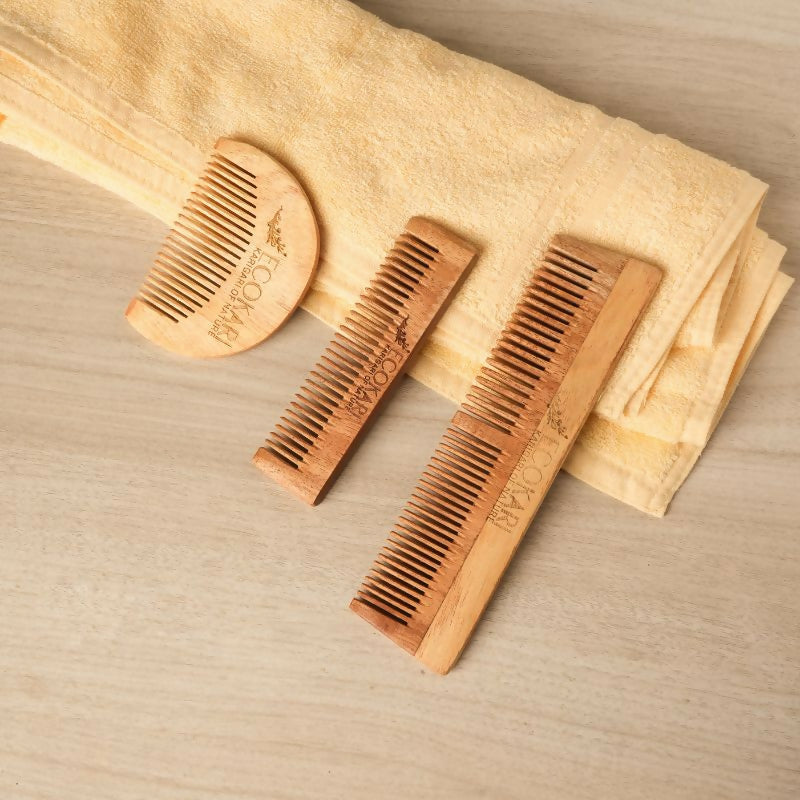Reviving Remnants: Turning Wood Waste into Functional Products

Wood waste, from forest debris to construction remnants, provides a wide range of materials that often end up overlooked or discarded. Despite this, the inherent durability and texture of wood make it an excellent candidate for recycling and upcycling. The strength and natural beauty of wood allow it to be transformed into sturdy, effective products that retain much of the character of the original material. By repurposing wood waste, we conserve natural resources, and step into a sustainable cycle of reuse. Here, we explore a variety of innovative products crafted from upcycled wood waste.
FOREST CRAYONS
Forest Wood Debris Crayons
Studio Playfool, based in Japan, innovatively crafts coloured forest crayons using discarded wood waste from various species of Japanese trees such as cedar, cypress, and magnolia. Collaborating with the Japanese Forest Agency, the studio harnesses natural pigments directly from these trees, celebrating their beauty and promoting sustainability. Contrary to the common perception that tree-derived pigments are mostly brown, Studio Playfool reveals a spectrum of hues, transforming different shades of forest waste into vibrant crayon colours. This project highlights the potential of upcycling and advocates for forest health and encourages tree planting. Now available at retail locations, these sustainable crayons serve as both artistic tools and ambassadors for environmental awareness.

(Image credit: Forest Crayons by Playfool Studio)
WEON RHEE
Construction Wood Waste Furniture
Weon Rhee, an artist based in Seoul, Korea, specializes in functional art and has repurposed construction wood waste into a furniture collection named 'Primitive Structures'. This series includes upcycled tables and stools made from discarded PSL beams and plywood, commonly found in construction sites. The design, inspired by Korea's ancient dolmen structures, carries an architectural reference with cultural homage, offering a sustainable second life to building materials. This unique approach explores the functionality of upcycled materials and also enriches them with a deep cultural narrative. Rhee's creation was recognised as a finalist for the 2024 Loewe Craft Prize by the Loewe Foundation, which celebrates the craftsmanship of international artisans. This accolade highlights the project's blend of sustainability, innovation, and cultural reverence.

(Image credit: Primitive Structures by Weon Rhee)
SHATRON MUTE
Recycled Wood Shavings Trumpet Mute
This inventive project reimagined a trumpet mute crafted from upcycled materials, named "Shatron Mute," is an award-winning musical instrument accessory designed by a talented group of designers: Ermanno Aparo, João Teixeira, Jorge Passos, and Liliana Soares. Typically, a trumpet mute is inserted into the bell of the trumpet to alter its sound. The Shatron Mute stands out by using recycled wood shavings combined with 3D printing technology, reflecting a commitment to environmental responsibility. This mute is uniquely designed, drawing inspiration from 14th-century Russian architecture, which adds a historical and aesthetic dimension to its function. This sustainable design concept repurposes waste materials into a practical musical accessory and also introduces an eco-friendly innovation to the world of musical instruments.

(Image credit: Shatron Trumpet Mute)
HEXBIX
Wood Waste & Cocoa Husks - Acoustic Wall Tile
Henry Swanzy, a British designer known for his sustainable design concepts, has developed "Hex Bix" acoustic wall tiles, an innovative product crafted from wood waste and cocoa husks. These materials, typically irregular and uneven, are transformed into soundproof and sturdy tiles, showcasing Swanzy's ability to repurpose waste into planet friendly design elements. As the founder of "Less is Better," Swanzy advocates the philosophy of maximising the lifecycle of resources and keeping them in circulation as long as possible. This project involved sourcing bulk wood waste and cocoa husks from local businesses, thereby supporting community enterprises and reducing the environmental impact associated with new material production. The Hex Bix project was a dedication to creating eco-friendly products that serve a practical purpose and challenge conventional waste management by turning discarded materials into valuable, aesthetic, and useful items.

(Image credit: Hexbix Acoustic Tile by Henry Swanzy)
BRIKET STOOL
Sawdust & Potato Scrap Stool
"Briket" is a creative recycled stool created by designer Renaud Defrancesco, which shows a remarkable use of repurposed materials. This design uniquely combines potato scraps and sawdust waste, materials typically destined for landfills, into a sustainable and functional piece of furniture. Defrancesco's process involves compressing these organic and wood wastes into a sturdy and reliable structure, suitable for use as a seating stool. The Briket stool is a sustainable approach to product design, recycling what would have been waste into a biodegradable and planet-friendly item. This experimental use of mixed waste materials which gives them a second life and also brings the potential of upcycled furniture to contribute positively to environmental conservation. Through this work, Defrancesco challenges conventional manufacturing processes and presents the feasibility of innovative, eco-conscious design solutions in everyday products.

(Image credit: Briket Stool by Renaud Defrancesco)
Upcycling wood waste helps curbing its disposal and shows the potential of this abundant material. From furniture and home decor to artistic installations, the creative reuse of wood waste contributes to a more sustainable and resource-efficient world. These initiatives help reduce deforestation and landfill use, proving that with a little creativity and innovation, what was once considered waste can be reused into valuable and beautiful new products.






Leave a comment